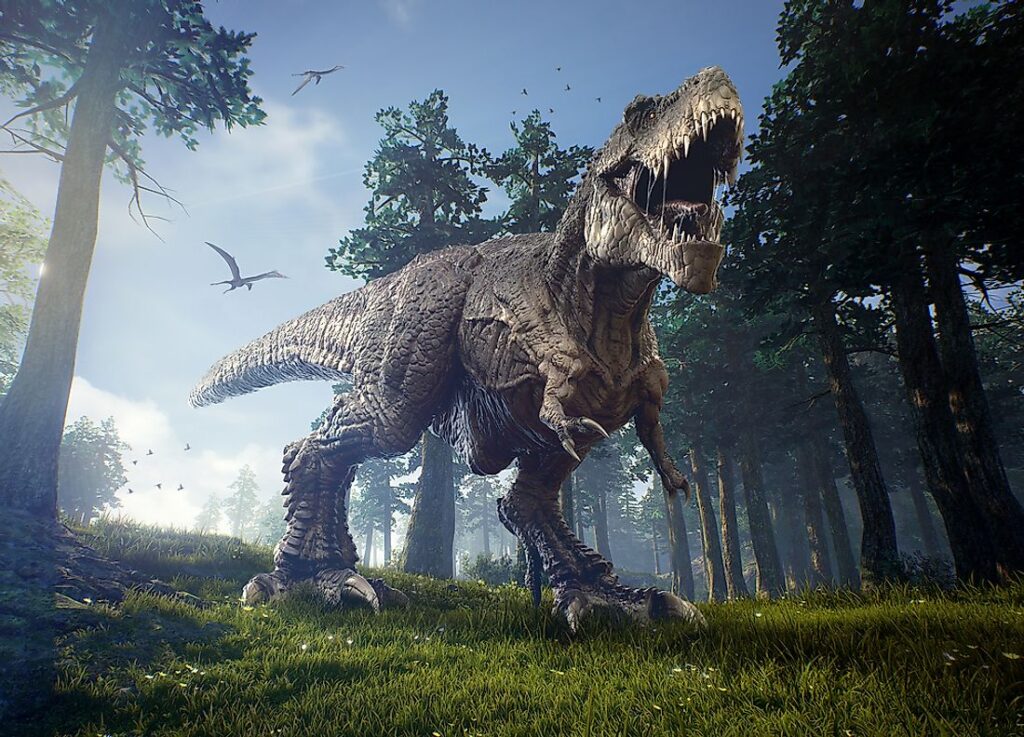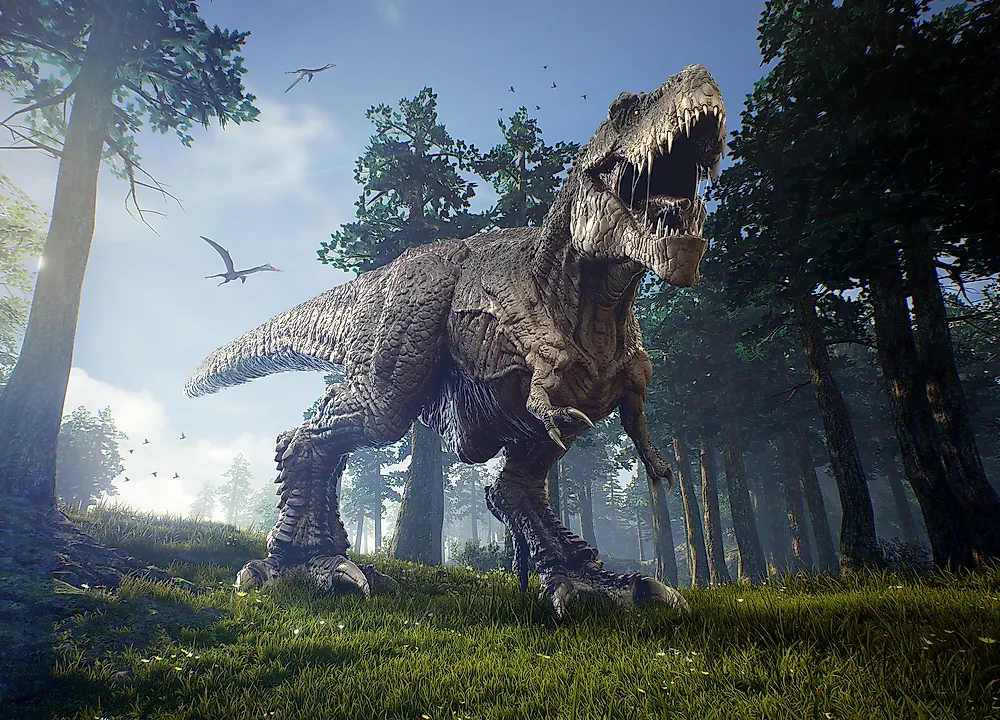

Description
The Tyrannosaur was one of the largest terrestrial animals. The largest specimen at Field Museum of Natural History, nicknamed Sue, measured 40 feet long and 12 feet tall at the hip. Its weight was estimated to be between 8.3 and 14 metric tons when it was alive. The mass of an adult tyrannosaurus varied widely over the years from 4.5 to 7.2 metric tons with modern measurements ranging from 5.4 to 8 metric tons. The neck was short and muscular to give support the heavy head and formed an S-shaped curve like most theropods.
The Tyrannosaur rex had two clawed fingers and additional small metacarpal on the forelimbs. The hind limbs were longer in proportion to the body size of most of the theropods. The tail was relatively long and heavy and sometimes contained 40 vertebrae, to assist in balancing the massive head and torso. Most of the skeleton on the head was hollow to compensate for its immense bulk. The T. rex might have had feathers in some parts of the body. The juvenile might have been feathered and shed off feathers at some point, assuming only scales as it became larger.
Feeding Strategies
Several studies show that T .rex might have had the strongest bite force among the terrestrial animals that ever lived. It had a possible bite force of 18 to 23 metric tons. It could bite down with a force of about 8,000 pounds when feeding, exerting a pressure of about 430,000 pounds per square inch with its teeth. The debate as to whether tyrannosaur was a scavenger or a predator still continues. Some researchers have associated T.r ex to its close relative, Gorgosaurus, which was a pure scavenger. Other researchers have argued that it was a predator and only scavenged or stole another predator’s kill when it did not have the opportunity. There has also been some evidence of cannibalism among T. rexes.
Locomotion
The debate about the locomotive ability of the T. rex is centered around its ability to turn and the straight-line speed it had. It might have been slow to turn, taking about two seconds to make a 450 turn. The cause of the inability to run fast was attributed to rotational inertia since most of its weight was far from its center of gravity. The T. rex may have produced a maximum speed ranging from 25 mph to 45 mph. Recent researchers do not support the speed faster than 25 mph. However, no track of running has been found, with other researchers believing that it did not run at all.